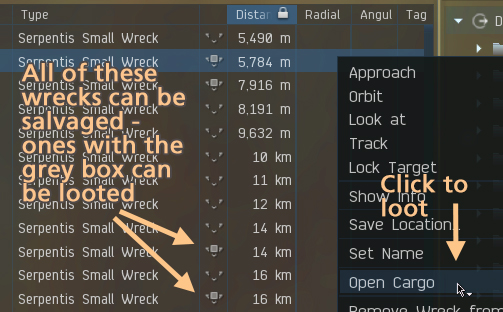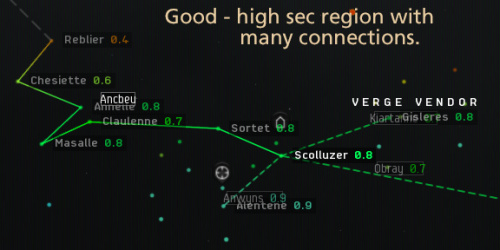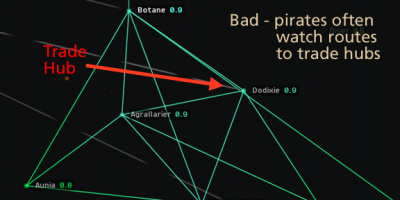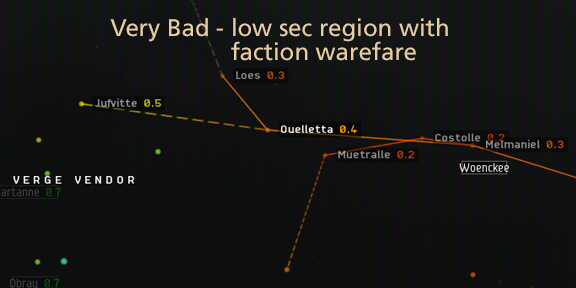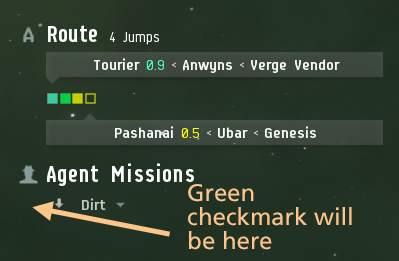Mission Running: Introduction
This article or section is in the process of an expansion or major restructuring. You are welcome to assist in its construction by editing it as well.
If this article or section has not been edited in several days, please remove this template.
| EVE University offers a class on: | |
A mission is a job offered by an non-playing character to a player which requires the player to accomplish a set of objectives within a time limit in exchange for a set of rewards.
This page provides a quick overview of the mission running experience. More details can be found at:
- Mission Running:Advanced - descriptions and advice on high level missions, research missions, Epic Arc missions, and anomic (burner) missions
- Mission Ships - discussion of the best ships for various levels of missions
- Mission Fleets - how to participate in a fleet of players running missions
ISK, Loot, Loyalty Points and Standings
These are the rewards that come from missions. They are talked about frequently on this page.
- ISK is Eve's currency. Most missions pay you in ISK. When you are new to the game, these payoffs are especially helpful because you need ISK to buy equipment for your ship.
- Loyalty Points are a currency that you receive from the Corporation whose agent gives you a mission. These points can be used to buy things at the Corporation's store.
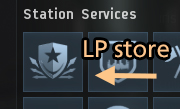
- Loot is the name given to various items that can be taken from the ships that you kill in certain kinds of missions. Loot can be sold for ISK, or it can be reprocessed into minerals that can be sold for ISK.
- Standings are numbers that indicate how good (or bad) your reputation has become. Doing missions almost always affects your standings with various individuals and groups.
Mission Levels
Mission levels go from low to high: 1-5. As you go up in level, the missions generally require that you have more experience and access to bigger ships, but they also provide better rewards. The level of a Mission Agent tells you the level of missions that the agent will offer. Each agent offers only one level of missions.
- Level 1 is where most new players start. Most level 1 missions can easily be done in a Venture frigate, Only the most basic piloting skills are required.
- Level 2 mining missions can be done in a Venture, but security missions go better in a combat cruiser, and distribution missions are best in a small industrial ship. These missions generally expect that you are continually improving your piloting skills and learning how to fit out new ships.
- Level 3 missions require a battlecruiser, a mining barge, or a medium-sized industrial ship. These missions go faster if you have trained for better ships and at least some Tech 2 fittings.
- Level 4 missions require a Battleship, an exhumer, or a large industrial ship. These missions can be time-consuming, but they offer large rewards.
- Level 5 missions are designed for groups of players and exclusively located in Low Security space.
Three Common Mission Types
There are three standard types of missions: Security (sometimes also called "Encounter"), Mining, and Distribution (sometimes called "Courier").
Security Missions
Security mission were once called Encounter missions, and you may still see this term used to describe them. These missions are given out by Corporation Security Agents and they always require you to go to a location somewhere in space and complete an objective of some kind. The objective is usually to kill a ship or a set of ships, but other goals can be included.
Security missions have the highest payout in ISK and Loyalty Points, but they usually involve the possibility of death.
Some of the wrecked ships that you have killed in a security mission can be looted and salvaged. Loot is found inside the dead ships. You must approach each ship within 2K meters and "Open Cargo". The wreck may be empty, but it may contain various items that you can drag to your own cargo hold. After the mission you will then have a bunch of items that you can sell or reprocess.
A wrecked ship can also be salvaged into it's electronic parts. To do this you need the Salvaging skill and a salvaging device fitted in a high slot on your ship. You can also salvage with Salvage Drones if you have the Salvage Drone Operation skill and room for them in your drone bay. Salvaged parts are used in Industry, and they can be sold in the Regional Market.
- Main article: Salvaging
Mining Missions
Mining missions are given out by Mining agents and require you to mine an asteroid or set of asteroids and bring the ore back to the agent's station. Level 1 missions will require mining up to 2000 m3 of ore; level 2 up to 6000 m3 of ore.
There is a risk of combat in mining missions, though the "belt pirate" hostiles that show up are usually rather weak. Note that Mining missions pay off in ISK and Loyalty points, you do not get ore from Mining missions. However, the Loyalty Point stores for Mining corporations often offer specialized mining plug-ins and crystals.
- Main article: Mining
Distribution Missions
Distribution missions were once called "Courier" missions, and you still see this term used to describe them. Distribution missions require the movement of a cargo from one station to another. Cargo size for Level 1 and 2 missions can be up to 450 m3 in size.
When a Distribution mission is accepted, the cargo spawns in your personal hangar at the pickup station. You need to move it to your ship's cargo space and haul it to the destination station. Level 1 missions will keep you within the agent's constellation, level 2 missions will possibly send you to a neighboring constellation.
Once docked at the destination station you may complete the mission by talking to the agent. The cargo only counts as delivered if it is either in your personal hangar at the destination station or in your ship's cargo hold while you are docked at the destination station.
Distribution missions never require combat, though, of course, you may encounter PvP combat on the way to your destination.
Mission Ships
- Main article: Mission Ships
The easily obtained Venture is designed to handle all three of the common level I mission types. It can be fitted out for mining or combat, and does both well enough to get by. It has a 50m3 cargo hold that can be expanded with the Expanded Cargohold item. Check the Venture Fittings page for examples. Look at the Venture page for a list of useful skills to train.
Mining
You will likely move up from your Venture to a Mining Barge. Any of these will work fine for mining missions, though you might want to concentrate on training for Exhumers by the time you reach level III. Exhumers have larger ore holds and let you finish your mining with fewer trips.
Distribution
You will likely move up from your Venture to an Industrial ship. Your goal in hauling is always to move as much as you can as fast as you can, and whichever industrial you choose should be able to handle level II and III missions. Level IV missions can require up to 8,000 m3 of cargo space - keep that in mind as you shop for ships later in your career.
Security
Combat ships offer more choices than miners and industrials. Are you training for shields or armor? Missiles, or lasers, or hybrids, or projectiles. Or drones? Do you want to get in close and blast away, or sit at range and snipe? Player-versus-Player (PvP) and mission running (PvE) require different ship characteristics and fittings to be at their most effective. So, if you are doing PvP, you will want to develop your PvE skills along the same lines. This takes some some planning, and you can find the details on the Mission Ships page of this Wiki.
Agents and Standings
Standings are a measure of how much one entity in EVE likes or dislikes another. These feelings are measured on a scale from -10 to +10 where negative is hatred and positive is love. Completing missions changes your standing with the agent, the agent's corporation, the agent's faction and, in security missions, the faction of the entities that you kill.
An agent will offer you missions only when your standings reach a certain amount, depending on the agent's level:
- Level 1: Any standings
- Level 2: 1.0 or higher
- Level 3: 3.0 or higher
- Level 4: 5.0 or higher
- Level 5: 7.0 or higher
Agents' standings are determined in part by your standing with their parent corporations. Because of this, there is an advantage to running your missions with the same agent. Each completed mission will raise your standing with that agent's corporation and move you more quickly towards the next level. In addition, because Loyalty Point stores are run by corporations, you will be able to buy more items faster if you stick with one corporation.
Finding Agents
You can click the "Agent Finder" button on the Neocon to open a tool for locating agents. You can open this same tool from the 'Agents' tab in 'People & Places' or by clicking the "Agent finder" button when docked. Check the box at the bottom to see only the agents who will offer you missions.
If you are based at Uni Highsec Campus (HSC), this list of level I agents might be helpful"
These two web-based tools offer the same data as the in-game Agent Finder, but in an easier format. (Easier once you get the hang of it!)
Other Mission Types
These mission types are not as widely available as the basic three.
Storyline Missions
As you continue to complete missions, you will occasionally get a Storyline Mission offer from a special Storyline agent. This agent will suddenly appear in various stations, however, you may need to travel to the agent's station in order to accept the mission. Once you are in touch with the Storyline Agent, you accept and complete the mission in the usual way.
Storyline missions are usually simple, often requiring you to buy units of ore for delivery to the agent, and they seldom require combat.
Completing a Storyline Mission substantially increases your standings with the agent's corporation and faction.
Research Missions
Research missions are a part of the Industry career path. Instead of Loyalty Points, these missions award Research Points that can be used to buy datacores from the agent who gives the missions. You will need to have trained various Science knowledge to the level required by an agent before he or she will offer you the mission. Datacores can be sold in the Market, and some players run these missions to make ISK from trading. Most players, however, have not trained the science skills that these missions require.
More information on Research Missions is included in the Details section of this page.
Epic Arc Missions
An epic arc is a series of up to fifty missions which are split up into chapters. Throughout the arc, you will be offered choices which will branch the arc in one or more directions, and thus the arcs have different outcomes depending on your choices. The missions that make up these arcs typically have very good ISK rewards and the last mission of the arc typically carries a handsome reward.
There are seven Epic Mission Arcs. Most players begin with The Blood-Stained Stars, an arc that can be completed in a T1 frigate and gives a boost in standings withe Sisters of Eve.
More information on Epic Arc Missions is included in the Details section of this page.
Anomic Missions
Anomic missions (also known as "burner" missions) are optional security missions that are given out by level 4 agents. They can always be declined without penalty. Anomic missions present a different and higher challenge compared to other security missions . You will encounter a small number of very powerful adversaries and you are restricted in ship size. These missions require specialized and expensive ship fits and high skills to solo. They also require piloting skills that are otherwise rarely used in PvE such as overheating. The game re-balances these missions frequently, so it is good to research the latest fits and tactics before attempting them.
More information on Anomic Missions can be found in the Details section of this page.
Tutorial Missions
Tutorial missions are missions that are supposed to help new players learn how to play EVE Online. It is a good idea to do these tutorials when you first start playing EVE, as they give valuable ships and equipment, and the increase your standings with the faction offering the missions.
Each player character can only do each Tutorial Mission from a given Tutorial Agent once ever, but the tutorial mission chains do count as Storylines in increasing corporation and faction standings.
COSMOS / Data Center
COSMOS and Data Center missions are described in further detail in Gaining faction standings fast.
Advice For New Mission Runners
This section offers insights from experienced players on how to be successful as a beginning mission runner.
Starting Up a Mission
If you're new to mission running and your goal is to gain loot, or pile up loyalty points to buy things, or to increase your standing with a faction, then you may want to lay out a plan to help you run your missions with a minimum of down time. Here are some suggestions.
1. Pick An Area In Which To Work
The last thing you want is to be running missions in the middle of a contested low sec region where combatants will shoot at you, or in systems that lie on a busy trade route where pirates will gank you. Use the map and look for a group of fairly high security systems set off from the major trade routes. It's also nice to have multiple star gates nearby, just in case you need to run for it.
2. Know What You Need; And Check Out What The Various Agents Offer
Successful mission runs give you ISK and Security missions can give you loot. They also give you standing with the agent that gave you the mission, the agent's corporation, and the agent's faction. And, they give you loyalty points that can be redeemed for items in the corporation's store. (For example, Roden Shipyards' missions give standings with the agent, the corporation and the Gallente Federation. And each mission gives loyalty points that can only be used in Roden's stores.)
Most corporation stores sell the same sets of augmentation implants. However, different corporations offer different sets of skill upgrade implants, and different factions offer different weapons and ammunition. Roden Shipyards, for example, sells warp drive and astrometric skill upgrades, while Astral Mining offers mining upgrades. Weapons and ammunition offers correspond to the faction's spaceship preferences - Minmitar offer projectile weapons and ammo, while Ammar offer laser weapons and crystals, and so on.
3. Pick A Corporation With Agents In The Region
Nearly every station has at least one agent, and there are many duplications in terms of standings and items offered for sale. So if you want to improve your standing with the Gallente, for example, and you want to buy some mining skill upgrades, then Astral Mining is one of the corporations you would want to consider. Since there are many Astral agents in Gallente space, choosing this corporation will not restrict your choice of star systems all that much.
Once you have a goal in mind, use the Agent Finder to narrow your choices of star system. Keep in mind that when you finish running level 1, you will almost certainly have to move to a new system to find a level 2 agent, and again for level 3. So try to find a group of level 1-2-3 agents that are fairly close together.
In the example below note that the box at the bottom left of the window is UNchecked - because you want to see all agents, not just ones that you can currently talk to. There are many level 1 agents, fewer level 2 and even fewer level 3. But it turns out that there are level 1 AND level 3 agents in Jufvitte. This is convenient. Even better, there is a level 2 agent in Gisleres - only two jumps from Jufvitte. This means that you can run the first three levels of missions at Roden Shipyards from a station in this area of space.
4. Pick A Base Station And Start Running
Here is the map for that area:
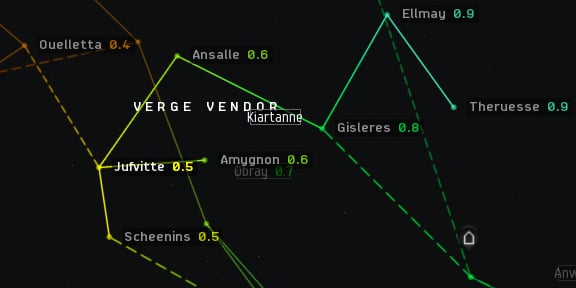
You need a base because as you go along, you will buy ships, ammunition and other gear, and you will pick up loot and junk from completed missions. It's easiest to keep all this stuff in one place, so plan to go to your agent's base to run missions, and fly back to your base when you need to refit. Missions often send you to other systems, usually in the range of 1-4 jumps from the agent's home base. This means that you will be jumping around a lot, and so there is no particular advantage to putting your base in the agent's system.
There are differing opinions on how to pick a good base station. I tend to put mine in a place where it's easy to buy ammo and ship equipment. This makes for minimum hassle if I need to upgrade equipment (because I've gained new skills), or fit out a new ship (because I've gone up a level). But the location is not terribly important ... if you're not sure where to put your base, don't worry about it. Just find an Agent and get started. The rest will work itself out as you go along.
Two hints for being sure your mission is complete
- Look for a green check mark next to the mission
- If you think the mission is finished, but you don't see the green checkmark, or if you're not sure what you need to do to finish, click on the little down-pointing arrow beside the mission name and select "details" from the menu. This will show you the mission statement and you can see what you still have to do to complete it.
Using Loyalty Points
- Main article: Loyalty Points
New missioneers often forget about the Loyalty points that they gain whilst running missions. These points (plus a small amount of ISK) can be exchanged for valuable items in the Loyalty Points store of the mission agent's corporation.
For some players it is more profitable to accumulate Loyalty Points in order to exchange them for goods which can then be sold than it is to kill, loot and salvage in security missions. This approach also has the advantage of shortening the amount of time it takes to achieve the Standings required to run higher level Missions, which are correspondingly more profitable in Loyalty Points terms as well.
You can review your Loyalty Points in-game in the NeoCom > JOURNAL button > AGENTS tab > LOYALTY POINTS subtab.
Security Missions Can Be Tricky
- Mission spaces will often contain acceleration gates that take you deeper into enemy territory; these gates are often locked until nearby enemies have been defeated. If you get to a gate, but it won't launch you, make sure that you have found and killed all the enemy ships in the area. Also, sometimes you have to loot the commander of the defending ships to get a "key" that unlocks the gate.
- Some missions tell you to go to a place, kill the ships there, and wait for reinforcements to arrive so that you can kill them too. If you don't read the mission statement, you can not notice this and go back to the agent before the mission is finished.
- Some missions look simple and easy, until a fleet of enemies suddenly appears. This mission, Cargo Delivery, for example, tells you to fly to a warehouse to pick up cargo. Simple enough, but once you pick up the cargo, a cluster of ships appears and targets you. You are right next to the warehouse at this point, and if you panic and try to warp out, you can get stuck ... and then, of course, utterly destroyed. If you have time, you should always get aligned before you warp ... just in case.
Mission Preparation and Walkthroughs
The first rule is to never fly what you cannot afford to lose. Even distribution missions can fail if you get ganked. So fly the cheapest ship that will do the job.
You should also know the mission you are being offered. Always understand exactly what you will encounter in a mission before you accept it, because if you accept a mission without understanding it, and it turns out to be too difficult, then your only options are to get help from other players or to quit the mission. You can also lose your ship in the process of discovering that the mission is too difficult for you. If you're not sure what a mission requires, you can always go online and read an analysis or walkthrough.
Most (if not all) regular and storyline missions are documented at Eve Survival Here you can read the details of what you need to do in the mission before you accept the mission, including (most importantly) details that the agent does not tell you up front.
Know also that NPCs in missions tend to be very predictable in their setups. For example, Gallente and Serpentis use only Kinetic and Thermal damage against you, but are also most susceptible to Kinetic and Thermal damage themselves; when they use any form of Electronic Warfare (EWAR), it's always sensor dampening. It helps quite a bit if you set up your ship to deliver damage that the NPCs don't like and defend against what they will throw at you. Check out this page for a full description of NPC damage types and a handy chart that you can keep in your Neocon Notebook.
Missioning with a Fleet
- Main article: Mission Fleets
Members of a fleet who run missions can share some or all of the standings, LP, ISK, loot, and/or salvage offered by the missions. This is especially good for newer players, as they generally gain more standings than they share. There are two main kinds of mission fleet: Spider, where everyone runs their own missions, but shares standings etc. at the end; and Locust, where the fleet members all work on the same mission together. Read the article on Mission Fleets for more details.
Notes:
- To check the viability of farming a mission you can use [Eve Survival] to see if your mission has a 'completion trigger'.
- Say you have a pocket with wrecks that you want to loot and/or salvage, but there's a pirate you have to keep alive in it to farm. You would need someone to loot/salvage while you tank the rat (or vice versa). You could also try fitting salvagers and/or tractor beams on a tanky ship or just abandon the wrecks.
